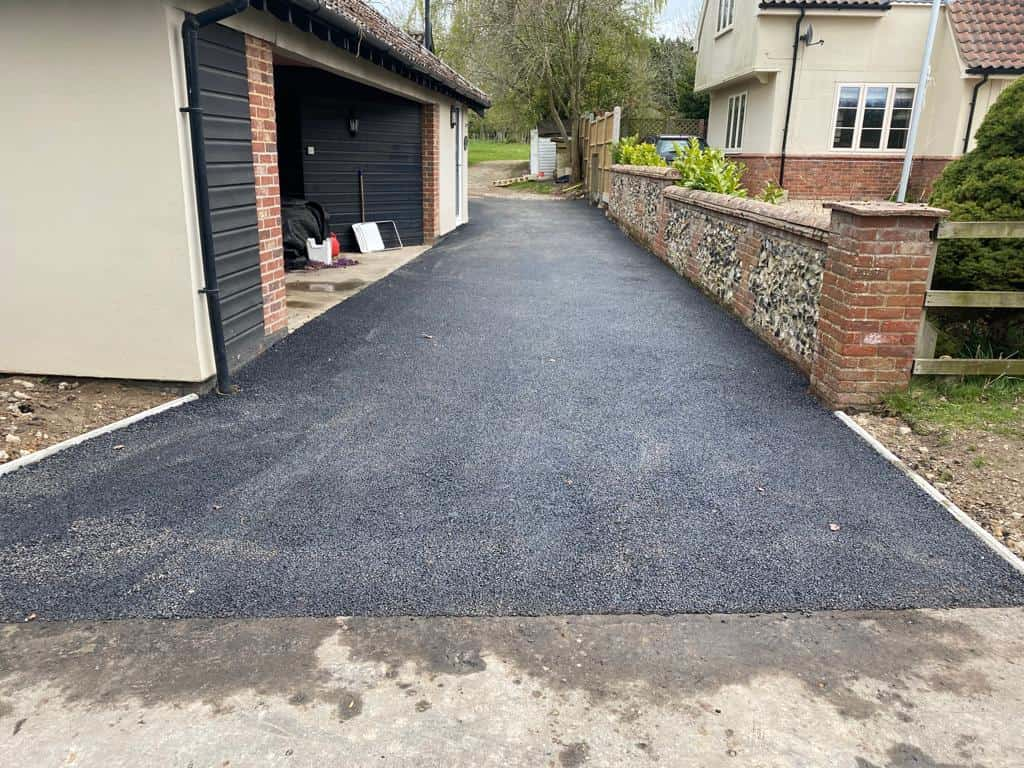Innovations in Tarmac Technology: Self-Healing and Noise-Reducing Surfaces
Introduction: Tarmac, known as asphalt, has been a taple material in road construction and driveway surfacing for decades. It’s known for its durability and versatility, but recent advancements in tarmac technology are taking its properties to the next level. Two notable innovations are self-healing tarmac and noise-reducing tarmac surfaces. In this blog post, we’ll delve into these innovations and how they are revolutionising the world of tarmac.
Self-Healing Tarmac
What is Self-Healing Tarmac?
As the name suggests, self-healing tarmac has the remarkable ability to repair small cracks and fissures on its own. This innovation addresses one of the most common issues with traditional tarmac – the formation of cracks over time due to wear, temperature fluctuations, and traffic.
How Does It Work?
Self-healing tarmac incorporates tiny capsules filled with a special rejuvenating liquid into the tarmac mix. When cracks form, these capsules rupture, releasing the liquid to fill and seal the cracks. This process mimics the way our skin heals when injured. The result is a tarmac surface that can repair minor damage without manual intervention.
Benefits of Self-Healing Tarmac:
Extended Lifespan: Self-healing tarmac can significantly extend the lifespan of road surfaces, reducing the frequency of repairs and resurfacing.
Cost Savings: Fewer repairs and maintenance mean cost savings for municipalities and homeowners.
Safety: Smaller cracks are less likely to expand into larger, more hazardous fissures.
Sustainability: By reducing the need for frequent repairs and resurfacing, self-healing tarmac contributes to sustainability efforts.
Noise-Reducing Tarmac Surfaces
What are Noise-Reducing Tarmac Surfaces?
Noise-reducing tarmac surfaces are designed to mitigate the noise generated by vehicle tires on the road. Excessive road noise can significantly concern residential areas, urban environments, and highways.
How Do They Work?
These surfaces incorporate a combination of special aggregates and binders that absorb and dissipate sound energy when tires pass over them. This reduces the noise generated by tire-to-road contact.
Benefits of Noise-Reducing Tarmac Surfaces:
Enhanced Quality of Life: Reduced road noise leads to a quieter and more peaceful living environment, benefiting nearby residents.
Improved Safety: Quieter roads can enhance safety by making it easier for drivers to hear emergency sirens and horns.
Reduced Environmental Impact: Noise-reducing tarmac surfaces contribute to noise pollution reduction efforts, benefiting local ecosystems.
Community Satisfaction: Quieter neighbourhoods are often more attractive to potential homebuyers and residents.
Conclusion: Innovations in tarmac technology are transforming the way we think about road construction and driveway surfacing. Self-healing tarmac promises longer-lasting and more resilient surfaces while noise-reducing tarmac surfaces contribute to quieter and more livable communities. As these technologies continue to develop, we can look forward to more sustainable, cost-effective, and environmentally friendly road and driveway solutions.
Call us on: 01787 322 199
Click here to find out more about Sudbury Driveway Solutions
Click here to complete our contact form and see how we can help with your driveway needs.

